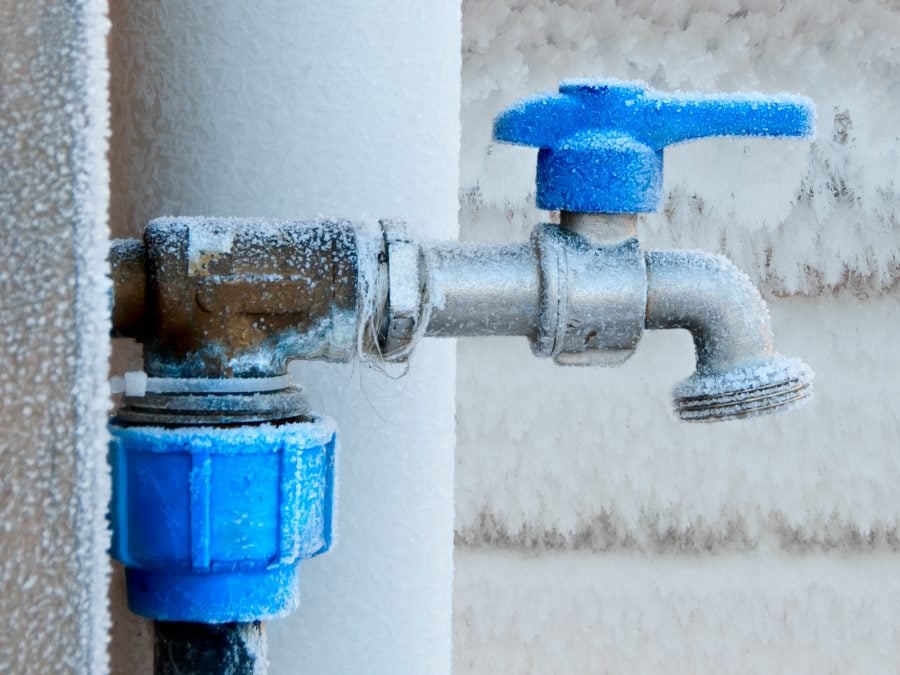Essential Advice to Prevent Frozen Plumbing in Winter: Specialist Guidance
Essential Advice to Prevent Frozen Plumbing in Winter: Specialist Guidance
Blog Article
Any individual seems to have their own individual beliefs when it comes to Preventing and dealing with frozen pipes.
:strip_icc()/snow-outdoor-faucet-pipes-4af65d1e5e904fb1aa7bf74071fe5d89.jpg)
Winter can damage your pipes, especially by freezing pipes. Below's exactly how to prevent it from taking place and what to do if it does.
Introduction
As temperature levels decrease, the threat of frozen pipelines increases, possibly resulting in pricey repairs and water damages. Understanding exactly how to stop frozen pipes is vital for homeowners in chilly environments.
Recognizing Frozen Pipes
What triggers pipelines to ice up?
Pipelines ice up when exposed to temperatures below 32 ° F (0 ° C) for prolonged periods. As water inside the pipes freezes, it broadens, putting pressure on the pipe wall surfaces and potentially causing them to break.
Dangers and problems
Frozen pipes can lead to water interruptions, residential or commercial property damages, and costly repair work. Burst pipes can flooding homes and cause extensive architectural damages.
Indicators of Frozen Pipeline
Determining icy pipes early can stop them from breaking.
Exactly how to identify icy pipes
Seek lowered water flow from faucets, unusual smells or sounds from pipelines, and visible frost on exposed pipelines.
Prevention Tips
Protecting prone pipes
Wrap pipelines in insulation sleeves or utilize warm tape to shield them from freezing temperatures. Focus on pipes in unheated or exterior areas of the home.
Heating methods
Keep indoor areas effectively heated up, specifically locations with pipes. Open closet doors to enable cozy air to circulate around pipelines under sinks.
Safeguarding Exterior Plumbing
Yard pipes and outdoor taps
Separate and drain garden pipes before wintertime. Install frost-proof faucets or cover exterior taps with shielded caps.
What to Do If Your Pipelines Freeze
Immediate actions to take
If you believe frozen pipes, keep faucets open up to relieve stress as the ice thaws. Utilize a hairdryer or towels soaked in hot water to thaw pipelines gradually.
Long-Term Solutions
Structural adjustments
Take into consideration rerouting pipes away from outside walls or unheated locations. Include added insulation to attics, basements, and crawl spaces.
Updating insulation
Buy top notch insulation for pipes, attic rooms, and wall surfaces. Correct insulation assists maintain consistent temperatures and lowers the risk of icy pipelines.
Conclusion
Stopping icy pipelines requires proactive steps and fast feedbacks. By understanding the causes, signs, and preventive measures, house owners can shield their pipes throughout winter.
5 Ways to Prevent Frozen Pipes
Drain Outdoor Faucets and Disconnect Hoses
First, close the shut-off valve that controls the flow of water in the pipe to your outdoor faucet. Then, head outside to disconnect and drain your hose and open the outdoor faucet to allow the water to completely drain out of the line. Turn off the faucet when done. Finally, head back to the shut-off valve and drain the remaining water inside the pipe into a bucket or container. Additionally, if you have a home irrigation system, you should consider hiring an expert to clear the system of water each year.
Insulate Pipes
One of the best and most cost-effective methods for preventing frozen water pipes is to wrap your pipes with insulation. This is especially important for areas in your home that aren’t exposed to heat, such as an attic. We suggest using foam sleeves, which can typically be found at your local hardware store.
Keep Heat Running at 65
Your pipes are located inside your walls, and the temperature there is much colder than the rest of the house. To prevent your pipes from freezing, The Insurance Information Institute suggests that you keep your home heated to at least 65 degrees, even when traveling. You may want to invest in smart devices that can keep an eye on the temperature in your home while you’re away.
Leave Water Dripping
Moving water — even a small trickle — can prevent ice from forming inside your pipes. When freezing temps are imminent, start a drip of water from all faucets that serve exposed pipes. Leaving a few faucets running will also help relieve pressure inside the pipes and help prevent a rupture if the water inside freezes.
Open Cupboard Doors
Warm your kitchen and bathroom pipes by opening cupboards and vanities. You should also leave your interior doors ajar to help warm air circulate evenly throughout your home.

We are very excited about How To Avoid Freezing Pipes and I hope you appreciated our post. Be sure to pause to promote this article if you enjoyed it. Many thanks for your time invested reading it.
Call Today Report this page